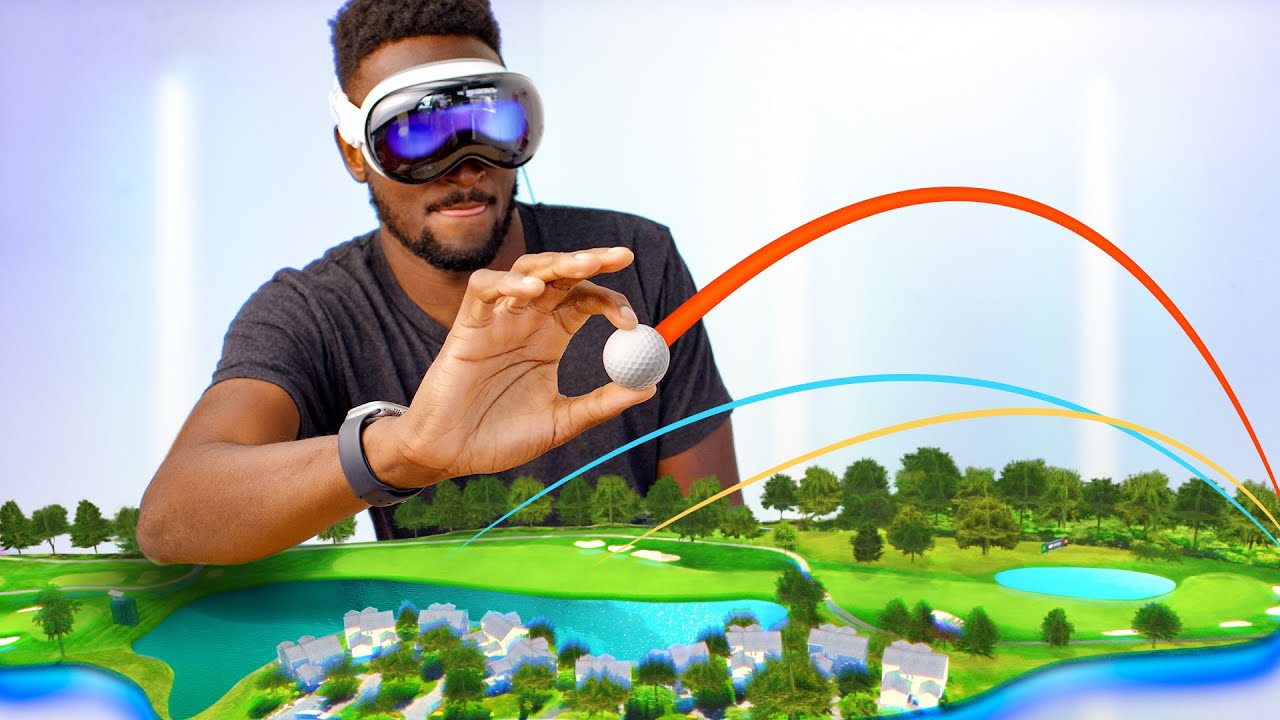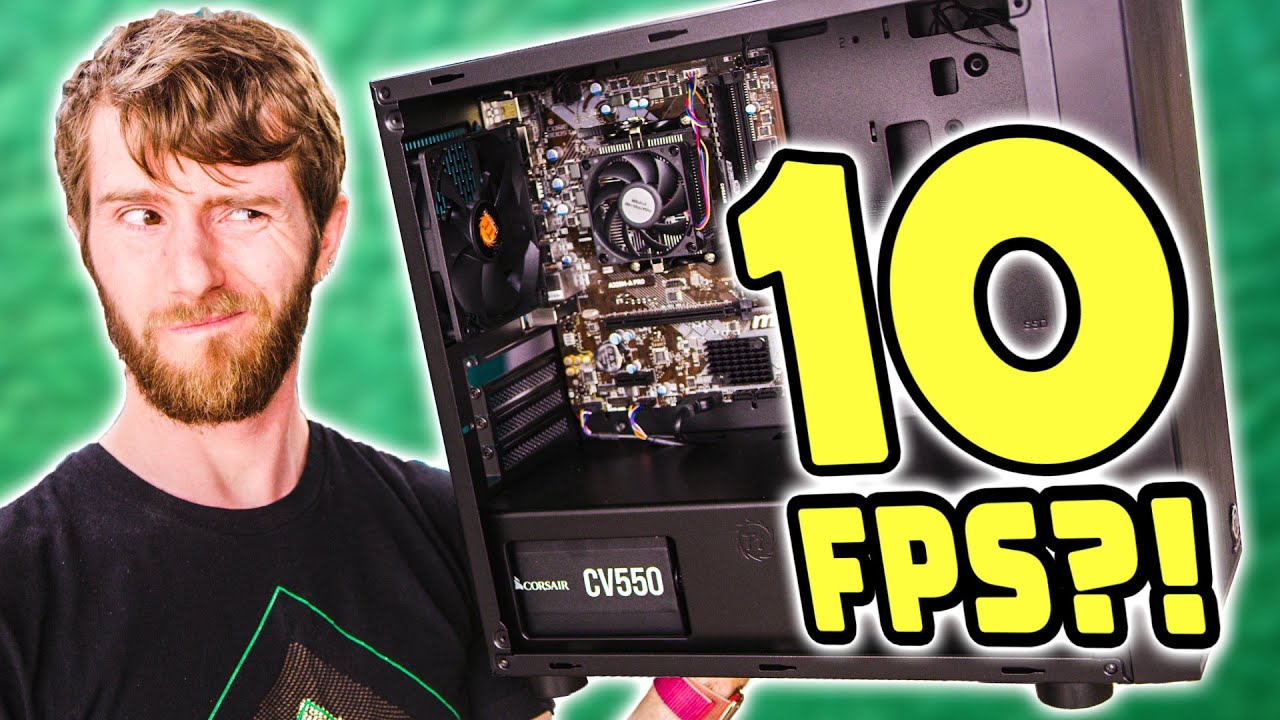
(bouncy upbeat music) – So every sport has some sort of tech involved in the show somewhere now, right? Like tennis has the famous replay in or out graphic. American football has the digital line of scrimmage we all know. And football, football has this sweet new offsides graphic and golf has this, the shot tracer. So some of you who’ve been subscribed for a long time already know this, but many of you also don’t. I am a golfer. I’ve been golfing for a long time. Longer than I’ve been doing like anything else. My first ever YouTube upload, before any other tech videos, was a couple of golf videos, believe it or not. – [Speaker] Come back, nice ball, good drive. – But I do still watch golf all the time. And of course, after doing that Formula 1 video, my brain is in tech in sports mode and I’m realizing the amount of technology hidden in plain sight on a golf course that makes a broadcast possible is actually insane. There’s cameras, there’s also lasers, there’s radar, LiDAR, optical fiber cables, there’s volunteers carrying Samsung phones with a custom app installed on them. There’s so much happening here. But why? And when you think about it, there’s really one good reason for all this stuff going on, which is golf is hard to watch, for a lot of the same reasons that Formula 1 is hard to watch. Like this sport, it’s not just like, it’s not one basketball court, where all the action is happening in the same place at the same time. It’s 18 different courts all spread around, hundreds of yards away from each other, all with different action happening on them at the same time with a tiny little white ball flying through the air that’s impossible to see. So when you’re not physically at the golf course, there’s basically three ways to watch golf, each requiring more technology than the last. There’s the TV broadcast, there’s the website portal, and then there’s the Vision Pro. (upbeat music) So the TV broadcast, it’s the most simple, right? But there’s still this flagship problem of the golf ball being tiny and basically invisible as soon as it gets hit. And so that problem was solved with the shot tracer. Now a lot of people don’t actually know how this gets made. Like it’s not a computer drawing a trace of where it kind of sees the golf ball going. It’s not an AI prediction of anything. It’s actually very precisely measured accurately. So if you’ve ever been around a golf course or looking at a broadcast during a tournament, you’ll notice there are a ton of these, these little towers here. Well, they’re not so little towers sometimes too. But these towers are strategically placed all the way around the golf course, behind the tee boxes, around the fairways, and behind the greens so that they’re covering the entire golf course. And every single one of these towers has three things, a camera, a TrackMan, and a wireless transmitter. So this TrackMan right here, this is the special thing. This is the radar system used to measure the exact launch speed and angle and spin rates of the golf ball the instant it’s contacted by a golf club. And then here’s the thing, once that gets measured, instantly the computers know everything about how that golf ball is going to fly through the air, as soon as it touch the ball, how high it’ll go, how far it’ll go, how much it’ll turn. And all of that will be even more useful in the next level. But for this TV broadcast, from the launch data, they can immediately project a shot shape line overlaid onto the hole using the angle from the fixed camera that’s sitting right behind the tee box and immediately get that data back to the broadcast trucks. Now the crazy part is, if you look around enough, you will see these things all over the golf course, they’re hidden in plain sight basically. Some of them are right next to the golfers at the tee box. Some of ’em are actually strapped up to TV towers. And it’s not just the tee boxes. The TrackMan launch monitors actually face backwards from behind the green too, so they can pick up launch data from all kinds of shots, shots from the fairway. It’s super impressive. And then all of these towers that I got to check out, turns out they’re all completely battery powered and can last for an entire day of a tournament. And then also this skirt around the bottom is actually covered in solar panels too. So they’re basically feeding into themselves and they never run out of power during the day. All of this is to just give us the shot tracer that makes golf on TV dramatically easier to watch. (upbeat music) Now sometimes, you can’t always watch golf on TV. You know, maybe you’re at work or maybe you’re somewhere else where you can’t be in front of a TV, but you got another tab open just so you can keep an eye on the PGA Tour website, so you can see what’s happening. Lucky for you, they have built this thing out. So the website now has this entire real time play-by-play portal where you can jump around to any hole and see exactly what’s happening when it happens. And then when the tournament is happening, every shot is updated in real time. But what I didn’t realize until seeing it in person is just how far they go to deliver all of these shots as soon as possible. So check this out. So there’s a few more pieces of tech on the golf course that you should know about. First of all, there are these on fairway cameras covering the whole course. And basically they’re like that tower that I showed you on the tee box earlier, but it doesn’t need any TrackMan on it. It’s just cameras and they’re pointed everywhere. And then there are also volunteers stationed alongside every hole with laser range finders and tablets. So they’ve got this nice little setup to be able to quickly tag a ball as soon as it lands and then upload its exact location. So here’s how it all works. Ready? So a golfer’s up on the tee box, they’re about to hit their first shot. You’ve loaded up the website. Remember how I said those radar trackers can compute exactly what the ball is going to do the second the club impacts the ball? Well, okay perfect, so that data is shot over to the Shotlink trailer in the parking lot where they have the feeds from all the cameras all over the golf course. And this is the crazy part. The second the shot gets hit, that system is already projecting a polygon on the course where it thinks the ball is going to end up. You can actually see it right here, outlined in yellow. Then a few seconds later, boom, the ball lands and rolls right into that box. It’s so sick. So then, the volunteer with the laser and the tablet will laser the ball and get its exact location just to confirm that, upload it, boom, it immediately shows up on the Tour website. Literally within three seconds of the ball coming to rest, it is updated. It’s pretty impressive. And the craziest part to me was seeing this system at work, like predicting where the ball is going to land. Again, before it even lands, as soon as they hit the ball, it is accounting for obviously the launch angle, the spin, the speed, but also things like the wind, the temperature, the humidity, your elevation, and all of that stuff to give you that polygon for probability for where the ball’s probably gonna end up. Now, obviously it won’t be perfect, especially if the ball does something unexpected, like hits a tree or a bird or something. But that’s why you have the volunteer down on the course with the laser just to finalize everything and hit submit. And they told me it actually calibrates itself over time, this system. So every 10 shots, it dials in even more, and I actually saw that happen in real time. I watched more shots during the course of the day. Some of the earlier shots would be just slightly off and then some of the shots later in the day would be fixed and they’d be nearly perfect. And then there’s actually one more piece of tech out there on the golf course that I haven’t even mentioned yet, and that is following every single group of golfers as they’re playing in the tournament, you’ll be able to spot one person holding a phone. And at this tournament, the travelers, they were pretty easy to find ’cause they were all wearing pink shirts. So what are they doing exactly, you might be asking. Well, I got my hands on exactly what they’re doing. Turns out, every single one of them is holding the same phone. It’s a Samsung Galaxy XCover6, a pretty ruggedized phone, which makes sense for outdoors. But what they’re doing is keeping official scores for the online scorecard and their fingerprint is in charge of closing the betting windows for people who are online gambling basically in real time on specific shots. So they literally hold their fingerprint down on this screen until the moment a player starts their backswing. Then they release it to close the betting window. Here you can see them doing exactly that, wait for the player to hit, wait patiently, and then there it goes. The shot gets hit, and then whoever’s betting on that specific shot, whether it’s hitting the fairway or hitting the green or whatever, that’s the moment it’s locked in. (upbeat music) So you remember when the Vision Pro first came out and there were all those mock ups of all these cool apps and experiences that people wanted to happen? I talked about how the ideas for the apps were ahead of the apps themselves. One of ’em was Formula 1. Somebody built this whole dream F1 watching setup with the broadcast up top and then this little mini map of the cars on the track down below. It looked so sick, but it turns out that wasn’t real. It was just a mock up that no one had actually made yet, except for the PGA Tour, it turns out, because the PGA Tour’s Apple Vision Pro app, it’s insane, it’s the same idea and it actually works. So they’ve got the leaderboard up top, a broadcast feed and some other things if you want, but then at the bottom, in real time, you can have a mini map of any hole on the course with an extremely accurate map of the hole that’s stitched together from, yes, an entire team of drones that fly over the course and map it out a couple of days before the tournament. All right, so once they’ve got all the drone footage imported and stitched it all together, this is the result. So this is literally on their computer, but this is a flyover of, this is the 10th hole, 456 yard par four, and right away you can see tons of details. There’s all the other houses on the property, there’s all the obvious things, like the tee boxes and the fairway. But you see every single tree, there’s the iconic tree in the middle of the fairway. You keep going, you can see the cart path, you can see where the hole is on the green. You can see even things like the TV tower and you flip it around, you can see where the stands are, I’m behind a tree, you can see everything. So this is as close of representation of that hole as you can possibly get for all 18 holes. And since it’s so detailed, you can look at the green and see how tilted it is. This is a pretty flat green, so there’s not a whole lot of elevation change, but they’ve got these little, I mean this looks like 2K, you can see the little rolling meters for where it rolls off. It’s extremely accurate. So 18 of those. So yeah, as this tournament is actually happening, this is what it looks like. It’s basically a combination of all the technologies we’ve seen through this whole experience, level one, two, and now three. You see the broadcast in all its glory, you see the scoreboard getting updated in real time, and then you have this full overhead view of any hole on the course that you can actually look around and watch the shot flying through the air. And these are the actual shot shapes. Like if a player hits a low shot, it will be a low shot in this visual. If they hit a draw or a fade or a high shot, it shows all of that too, because the launch monitor knows all of this stuff. So this feels like a really futuristic way to watch golf. I thought it was super cool. Now, again, similar to Formula 1, they’re at a new location every single week for every new tournament. So it is a massive logistical challenge to put all of this stuff onto the course and get it all together. Matter of fact, just seeing everything they have to bring in from the dozens of trailers to the 10 to 20 miles of fiber, running all over the golf course, to the drone footage, mapping out every hole, and of course, the grandstands and the scoreboards and the TrackMan towers and the TV towers all over the golf course. Like they can’t do this for every single tournament, but they do try for as many of the larger, high profile events as possible. So it was sick to watch this event in person and then go back and see how golfers hit certain shots and how it looks on the broadcast and then in the Vision Pro and just to get to see how it’s represented for people who aren’t there. Because for every sport, the broadcast is so important. It’s really only 1% or less of the people actually watching are the ones there in person. But basically for everyone else, they get to know the sport through the broadcast, through the media, and that’s what’s so cool about it. And that’s always evolving over time. I dunno if you remember, maybe 30 years ago, the NHL tried something interesting with a glowing puck. This was like the mid-90s. They tried to make it easier for people to watch the broadcast and follow the puck around. It was well intentioned, but obviously pretty tough execution, even though it’s still kind of cool for 30 years ago. Nowadays, the tech is so refined and so precise that you can track a tiny white ball through the air over three football fields at a time within a couple yards of margin of error. And it is definitely an improvement. All this, of course, at the end of the day, is to put on a great show, make a great followable broadcast, and for the golfers to go out and compete and to try to win the tournament, and at the end of the season, to try to win this, the FedEx Cup, the precious end of the year prize. And I touched it, I touched the FedEx Cup. Pretty sick. So yeah, shout out again to the PGA Tour for making this video possible, for pulling back the rope, and letting us see the behind the scenes. Nobody gets to see this stuff, but now you have. Thanks for watching. Catch you in the next one. Peace. (upbeat music)
source






